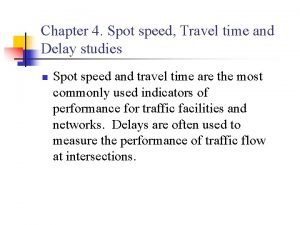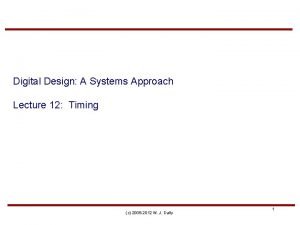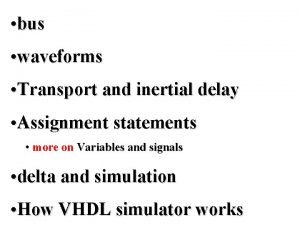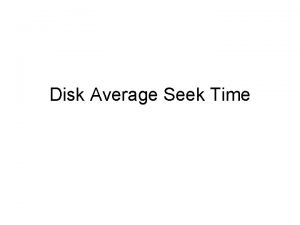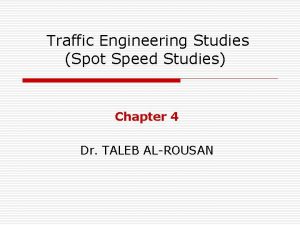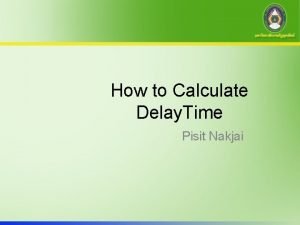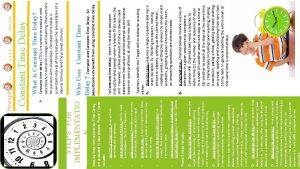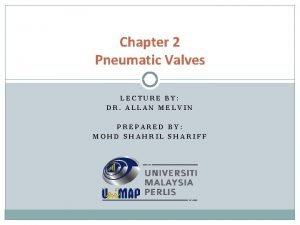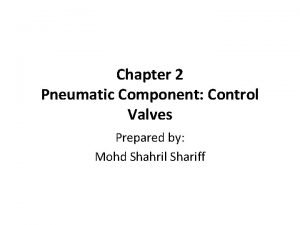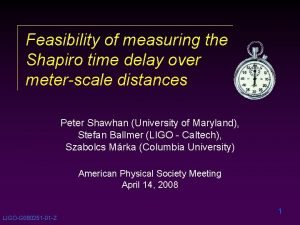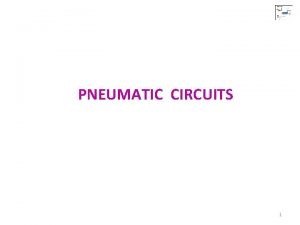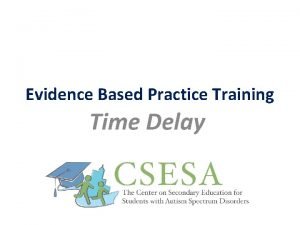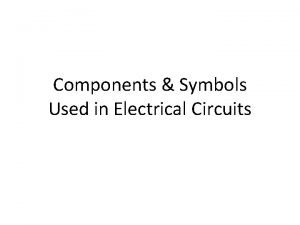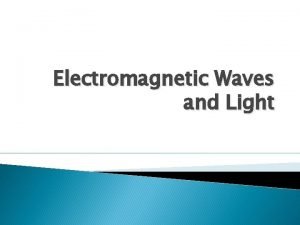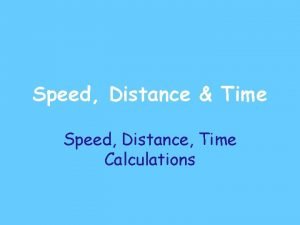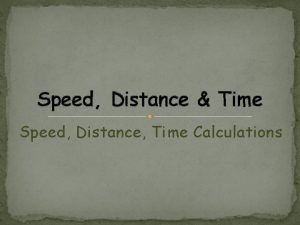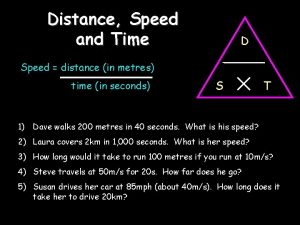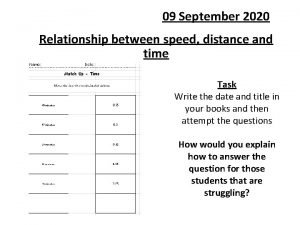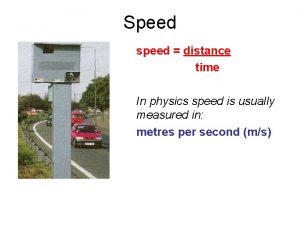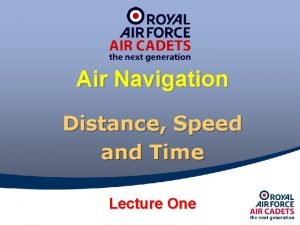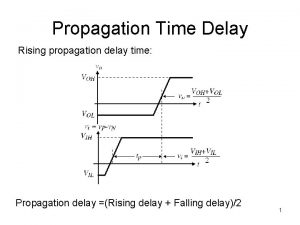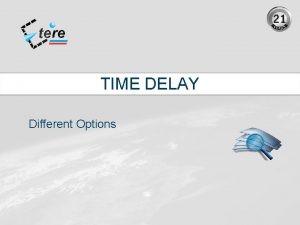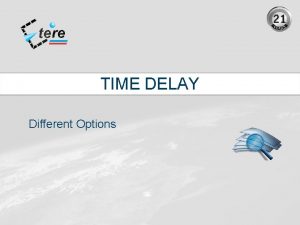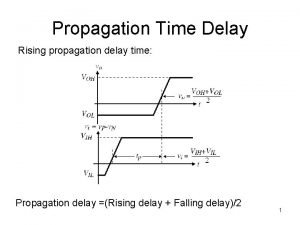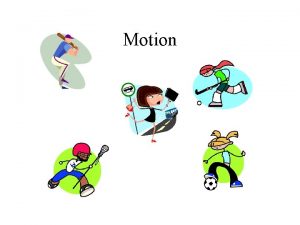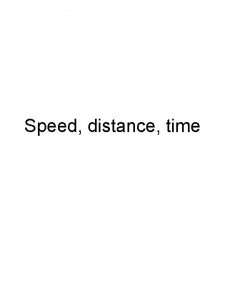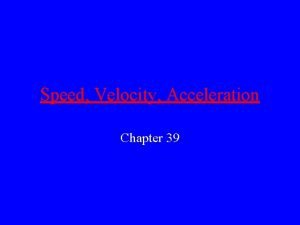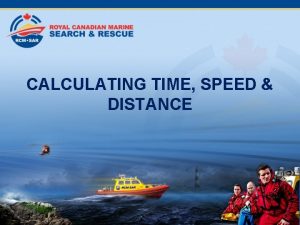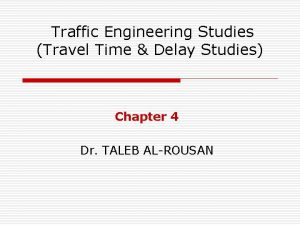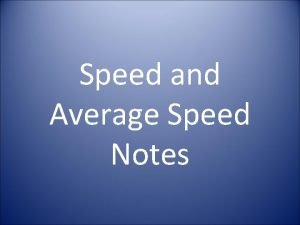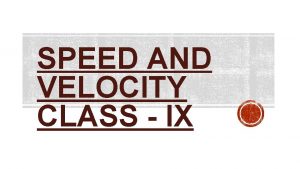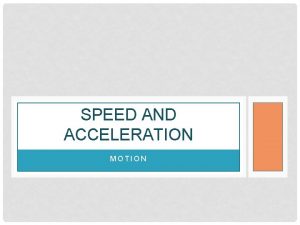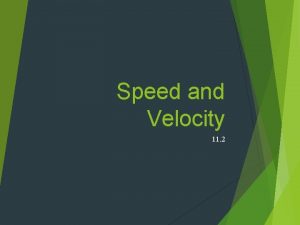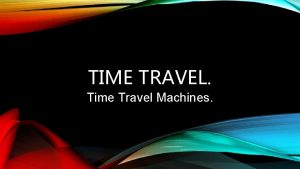Chapter 4 Spot speed Travel time and Delay


































- Slides: 34

Chapter 4. Spot speed, Travel time and Delay studies n Spot speed and travel time are the most commonly used indicators of performance for traffic facilities and networks. Delays are often used to measure the performance of traffic flow at intersections.

1. Spot speed n n n Spot speed (地点车速) is defined as the average speed of vehicles passing a point on a highway Spot speed belongs to TMS Spot speed is typically obtained under free flow conditions

Central tendency of speed n n n Mean speed (平均速度)--- defined as average speed Mode speed (众速度)--- defined as the most frequent single value among observation Median speed (中位速度)--- defined as the speed that equally divides the distribution of spot speeds meaning there as many vehicles traveling at higher speeds as at lower speeds, or called 50 th percentile speed

Spot speed collection methods n n Stop-watch method (manual) Radar meters (hand-held or mounted on a vehicle) n Loop detector method (线圈检测) n Microwaved-detector (微波检测) n Video-frequency detector (视频检测)


Layout of loop detector

Video frequency detector

Common descriptive statistics n n n Pace (速度差幅度)--- defined as a 10 miles per hour increment in speeds that encompassed the highest proportion of observed speeds Pace can be used to reflect safety situation The higher the percentage of vehicles traveling within the pace, the safer it is, and vise versa


n n n Standard deviation (标准差)--Standard error (离差)of the mean --Range of true mean (区间估计)of spot speed --Required sample size (样本量)--Other parameters --- mode (众数), median (中位 数)




n Standard deviation (标准差)--- n Standard error (离差)of the mean --- n Range of true mean (区间估计)---

Sample size requirement

Application of spot speeds n n n speed limit build-up trends establishment specific design applications specific control applications high-crash investigation

2. Travel time studies n In general travel time studies involve significant lengths of a facility or group of facilities forming a route. It is often conducted on the arterial (主干道)or major roadway, along which there are several intersections (signalized or stop/yield signs).

Purpose of travel time studies n To identify problem locations on facilities n To determine level of service of the facility n n n To provide some inputs for traffic assignment process To provide travel time for economic evaluation of transportation improvement To provide information for travelers

Methods of travel time survey n n n Technique for travel time studies ---- car following method(跟车法)and license-plate method(牌照法)GPS-based method Runs for travel time studies --- depend on the accuracy requirement, time and budget Travel time displays --- contour lines (等时线)


3. Delay studies n n n Delay is defined as an extra time spent by drivers against their expectation Delay is often used to estimate economic losses -- more fuel consumption and low productivity of operation Delay is also a very important MOE (measure of effectiveness 效率度量) in traffic engineering

Types of Delay at Intersection Distance Time-Space Diagram Approach Delay Stopped Delay Approach Delay A B C Time

Basic types of delay n n Stopped-time delay (停驶延误) --- the time a vehicle spends stopped waiting to proceed through a signalized or STOP-controlled intersection; Approach delay (进口或引道延误) --- adds the delay due to deceleration to and acceleration from a stop to stopped time delay;

n n Time-in-queue delay (排队延误) --- the time between a vehicle joining the end of a queue at a signalized or STOP-controlled intersection and the time it crosses the STOP line to proceed through the intersection; Control delay (控制延误) --- the total delay at an intersection caused by a control device, including both time-in-queue delay plus delays due to acceleration and deceleration.

Intersection delay studies n n Stopped-time delay --- difficult to measure in field Control delay --- time-in-queue delay plus deceleration/acceleration delay


Uniform Delay

Incremental Delay

n Methods of intersection delay studies --n n n (1) license-plate (牌照法) (2) sample-counting (点样本法) (3) HCM 2000 cycle-based method (手册法)

License-plate approach n n This approach is useful for particular study with small sample size This approach is relatively accurate Communications among surveyors play an important role in obtaining high match-up rate Computer programming is needed to handle huge match-up work

Sample-counting approach n n n It is used when queue length is not too long Number of lanes at approach is small The good point of this approach is its automatic adjustment The weak point of this approach is that average stopped delays can be obtained but their distribution can not be got Refer to Chapter 6 of textbook by Ren Fu Tian

HCM 2000 cycle-based approach n n Similar to sample-counting method in collecting data but different in calculation Like sample-counting method this approach can get average control delay only, and can’t come up with distribution of the delay


 Travel time and delay studies
Travel time and delay studies Propagation delay
Propagation delay Difference between signal and variable in vhdl
Difference between signal and variable in vhdl Plc timers
Plc timers Seek time hard disk
Seek time hard disk Spot speed studies are conducted to
Spot speed studies are conducted to Comparing distance/time graphs to speed/time graphs
Comparing distance/time graphs to speed/time graphs Time distance/speed formula
Time distance/speed formula Decfsz
Decfsz Constant time delay
Constant time delay Supply air throttling and exhaust air throttling
Supply air throttling and exhaust air throttling 5/2 dcv symbol
5/2 dcv symbol Shapiro time delay
Shapiro time delay You may delay but time will not benjamin franklin
You may delay but time will not benjamin franklin Pneumatic circuit for single acting cylinder
Pneumatic circuit for single acting cylinder Progressive time delay
Progressive time delay Overload contact symbol
Overload contact symbol Mig welding voltage and current chart
Mig welding voltage and current chart Do all em waves travel at the speed of light
Do all em waves travel at the speed of light Light waves
Light waves One effect of high speed driving is speed smear in which
One effect of high speed driving is speed smear in which Speed detection of moving vehicle using speed cameras ppt
Speed detection of moving vehicle using speed cameras ppt Start time, end time and elapsed time
Start time, end time and elapsed time Earthquake p wave and swave travel time
Earthquake p wave and swave travel time Time speed formula
Time speed formula How to calculate rate of speed
How to calculate rate of speed Speed distance and time worksheet
Speed distance and time worksheet Speed= distance/time
Speed= distance/time Distance time speed triangle
Distance time speed triangle Speed time and distance formula
Speed time and distance formula Speed distance and time
Speed distance and time Relationship between speed distance and time
Relationship between speed distance and time Distance speed x time
Distance speed x time Speed and agility frequency, intensity, time type
Speed and agility frequency, intensity, time type Distances
Distances
